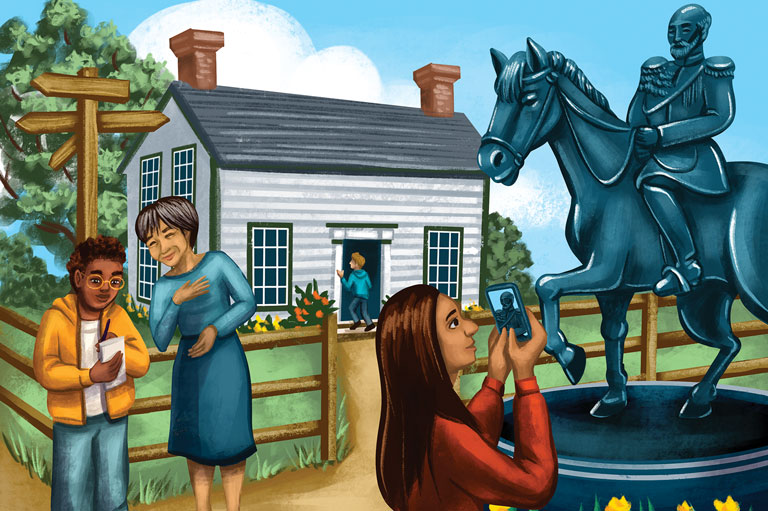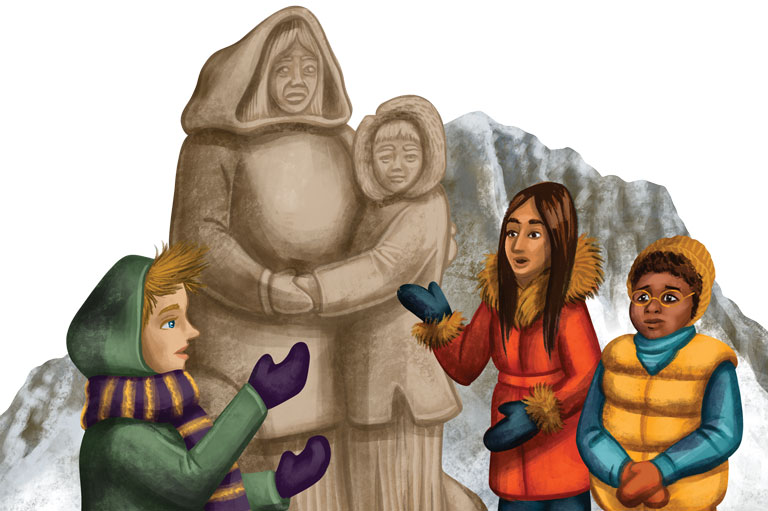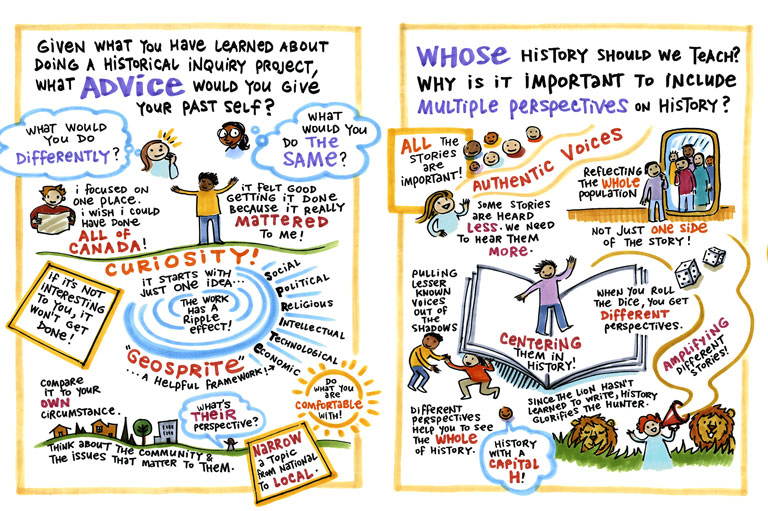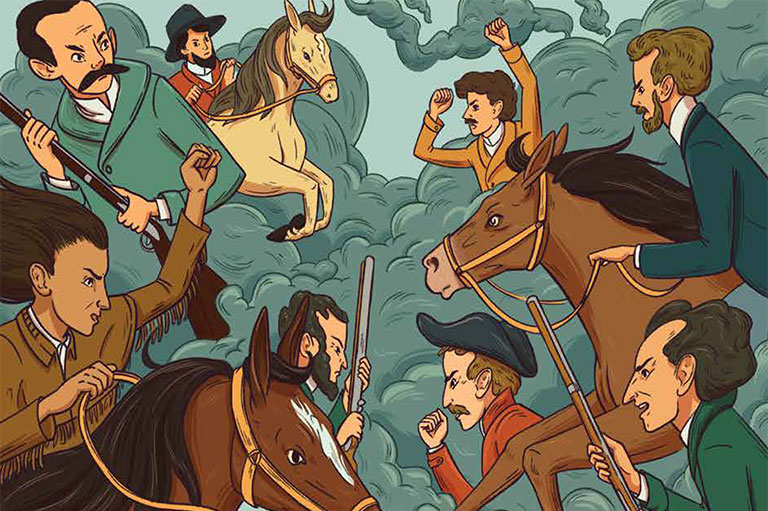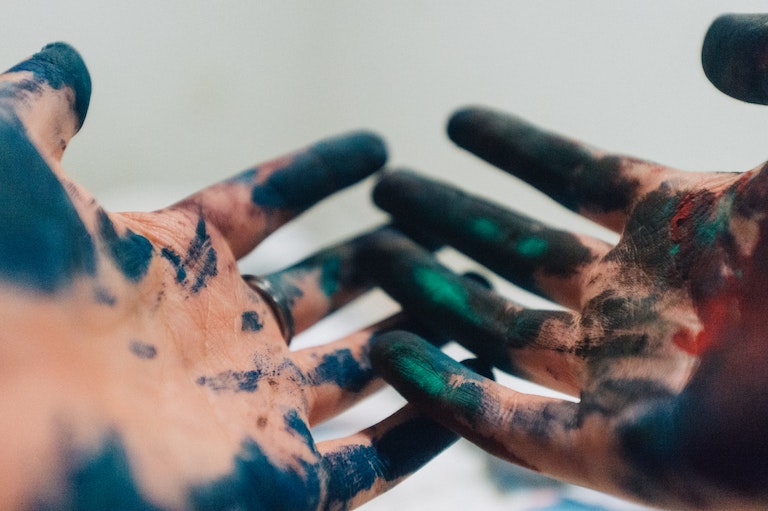Finding and Assessing Sources
This lesson links to the section “Explore Your Story” found on pages 14 to 21 in What’s The Story?
Background
It is important for students to consult a wide variety of sources as they do their research. This lesson will encourage students to brainstorm different types of sources they can use to answer their Big Question. This activity corresponds to the prompt found on page 21:
What types of sources could you use to answer your big question? Choose three to share at CanadasHistory.ca/WhatsTheStorySources. Include book titles, website urls, museum names, and other specific details. That way other kids across Canada can use your great sources!
Activity
Pre-research
Before students begin their research, have them brainstorm in small groups as many examples as possible of sources they could use in a history project.
Gather the students’ suggestions of possible sources and list them in a column on the left side of the board or screen.
Share these definitions with students:
Primary Source — provides first-hand information or knowledge about a topic. A primary source is usually created close to the time of the event or topic.
Secondary Source — provides second-hand information about an event or topic. A secondary source provides an interpretation of what happened in the past.
Trace — a physical clue of the past, like a photograph, tool or letter. Traces are not created for the purpose of documenting history.
Account — a deliberate telling of something that happened, like a TV news broadcast, diary entry, or biography.
Add these terms across the top of the remaining section of the screen or board.
Invite students to identify whether each source is a trace or account and whether it is a primary source or secondary source. Keep a record of the brainstorm to return to later.
Example:

This activity works best when students have identified specific evidence and sources, such as interviews with individuals, actual documents or artifacts, etc. Also, sources can often be either a primary source or a secondary source, depending on what question you ask. (For example, a history textbook from the 1950s can be a secondary source because it provides an account of things that have happened in the past. However, if you are researching the types of topics that students learned in the 1950s, the textbook becomes a primary source).
Mid-research
To check the variety of sources being used by the students, ask students to take turns standing to name one source that they used (for example, an interview with an expert). If anyone else used the same or similar source, they would stand and say, “Me too.” The last student to suggest a source that has not yet been mentioned yet gets a round of applause.
Return to the list of sources you created as a group at the pre-research stage. Suggest to students that they review it if they have realized their research would benefit if they used a wider variety of sources.
At this stage, students can make a list of sources to share online at CanadasHistory.ca/WhatsTheStorySources. Encourage them to read responses left by other students and identify any sources they can add to their research.
Post-research
After the students have completed their research, play a quick game of Source Bingo. Print and distribute the bingo cards. Randomly call out the items on the squares and have students check off the sources you call if they used them. The student who covers the most squares gets a small prize or round of applause.
Response and Reflection
After their research, encourage students to return to CanadasHistory.ca/WhatsTheStorySources to view the student-generated list of sources. Encourage your students to add any sources to the list that they have used that have not already been shared.
Invite students to read the submissions from other students across Canada. Encourage discussion and reflection by asking questions such as:
- Which sources were the most beneficial for your research?
- Are there sources listed that you would like to try to use in future projects?
- What kinds of evidence do you think you will leave behind for future historians?
Themes associated with this article
Advertisement

